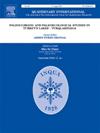Paleolithic settlement patterns in the Central Balkans: A predictive approach on the territory of Serbia
IF 1.8
3区 地球科学
Q3 GEOGRAPHY, PHYSICAL
引用次数: 0
Abstract
Predictive spatial modelling in archaeology has emerged as a valuable analytical tool for research and cultural resource management over the last decades. By combining GIS techniques and geostatistical methods, this tool examines the distribution of archaeological sites within their environmental context, aiming to understand settlement patterns and explain past human behavior through their link with the local environment. In this study, we compare three predictive modelling methods, Probabilistic Frequency Ratio, Generalized Additive Model, and MaxEnt applied to the case of the Paleolithic cave sites in the Central Balkans. The models were evaluated firstly through a threshold-independent measure using the Area Under the Curve (AUC), and secondly as binary models to assess their classification accuracy. While all three methods demonstrated good performances (AUC>0.85), MaxEnt proved to be the most efficient, as evidenced by both binary and threshold-independent evaluations. MaxEnt identified several high-probability areas based on geomorphological and ecological associations with the known archaeological cave sites. The reliability of MaxEnt's predictions was further reinforced by the substantial overlap with the results from the other two models. With each model built for two nested regions, we examined their respective interpolation and extrapolation performances to explore the potential of such approaches in cases where the archaeological data might be too scarce. The results suggest that such procedures might be applicable/warranted for investigating broader or underexplored regions with limited datasets.
巴尔干中部旧石器时代的定居模式:对塞尔维亚领土的预测方法
在过去的几十年里,考古学中的预测空间模型已经成为研究和文化资源管理的一种有价值的分析工具。通过结合地理信息系统技术和地质统计方法,该工具检查考古遗址在其环境背景下的分布,旨在了解定居模式,并通过其与当地环境的联系来解释过去的人类行为。在本研究中,我们比较了三种预测建模方法:概率频率比、广义加性模型和MaxEnt,并将其应用于巴尔干中部旧石器时代洞穴遗址的研究中。首先使用曲线下面积(Area Under The Curve, AUC)作为阈值无关的度量来评估模型,然后使用二元模型来评估模型的分类精度。虽然这三种方法都表现出良好的性能(AUC>0.85),但MaxEnt被证明是最有效的,这一点得到了二值和独立阈值评估的证明。根据地貌和生态与已知考古洞穴遗址的联系,MaxEnt确定了几个高概率区域。与其他两个模型的结果大量重叠,进一步加强了MaxEnt预测的可靠性。通过为两个嵌套区域构建每个模型,我们检查了它们各自的内插和外推性能,以探索这些方法在考古数据可能过于稀缺的情况下的潜力。结果表明,这些程序可能适用/保证调查更广泛或未充分开发的区域与有限的数据集。
本文章由计算机程序翻译,如有差异,请以英文原文为准。
求助全文
约1分钟内获得全文
求助全文
来源期刊

Quaternary International
地学-地球科学综合
CiteScore
5.60
自引率
4.50%
发文量
336
审稿时长
3 months
期刊介绍:
Quaternary International is the official journal of the International Union for Quaternary Research. The objectives are to publish a high quality scientific journal under the auspices of the premier Quaternary association that reflects the interdisciplinary nature of INQUA and records recent advances in Quaternary science that appeal to a wide audience.
This series will encompass all the full spectrum of the physical and natural sciences that are commonly employed in solving Quaternary problems. The policy is to publish peer refereed collected research papers from symposia, workshops and meetings sponsored by INQUA. In addition, other organizations may request publication of their collected works pertaining to the Quaternary.
 求助内容:
求助内容: 应助结果提醒方式:
应助结果提醒方式:


